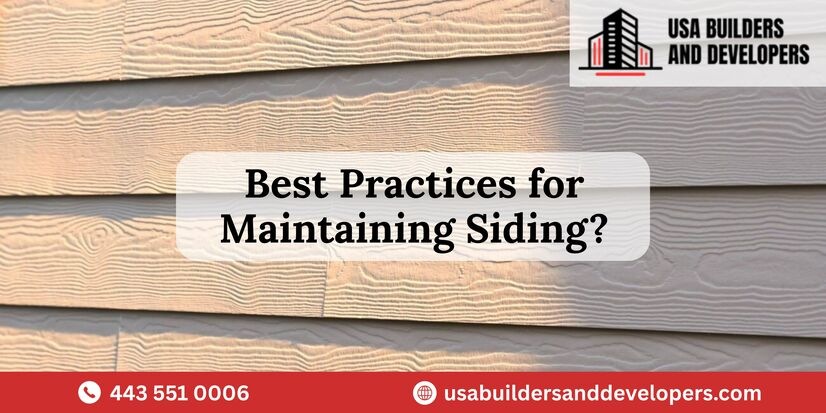Maintaining your home’s siding is crucial for preserving its appearance, ensuring its longevity, and protecting your home from the elements. Whether your siding is made of vinyl, wood, fiber cement, or another material, proper maintenance through expert siding services can save you money on repairs and keep your home looking its best. Here are the best practices for maintaining siding
1. Regular Cleaning
Why It Matters: Regular cleaning prevents dirt, mold, mildew, and stains from accumulating, which can degrade the siding material over time.
How to Do It:
- Vinyl Siding: Use a garden hose and a soft brush or cloth. For stubborn stains, mix a solution of water and mild detergent.
- Wood Siding: Use a mild detergent solution and a soft brush. Avoid pressure washing, which can damage the wood.
- Fiber Cement Siding: Clean with a low-pressure washer or a soft brush with a mild detergent.
Frequency: Clean your siding at least once a year, or more frequently if you live in a particularly dusty or humid area.
2. Inspect for Damage
Why It Matters: Regular inspections help you catch and address small issues before they become major problems.
How to Do It:
- Look for cracks, chips, or gaps in the siding.
- Check for signs of water damage, such as discoloration or mold.
- Inspect the caulking around windows and doors to ensure it’s intact and sealed properly.
Frequency: Conduct a thorough inspection twice a year, ideally in the spring and fall.
3. Repaint or Refinish When Necessary
Why It Matters: Repainting or refinishing protects the siding material from weathering and keeps it looking fresh.
How to Do It:
- Wood Siding: Repaint or re-stain every 3-7 years, depending on the type of finish and exposure to elements.
- Fiber Cement Siding: Typically needs repainting every 10-15 years.
Frequency: Follow manufacturer recommendations and consider repainting or refinishing when the current layer shows signs of wear.
4. Trim Trees and Shrubs
Why It Matters: Overgrown trees and shrubs can scratch and damage siding, and they can also harbor moisture, which can lead to mold and rot.
How to Do It:
- Regularly trim back any vegetation that is touching or close to your siding.
- Ensure that branches are at least a foot away from the siding to allow proper air circulation.
Frequency: Prune trees and shrubs at least twice a year and more often if they grow rapidly.
5. Address Mold and Mildew Promptly
Why It Matters: Mold and mildew can cause health issues and degrade siding materials.
How to Do It:
- Clean affected areas with a solution of water and a small amount of bleach (1 part bleach to 10 parts water).
- Rinse thoroughly with water after cleaning.
Frequency: Check for mold and mildew during your regular inspections and clean immediately if you spot any growth.
6. Repair Damaged Siding Quickly
Why It Matters: Prompt repairs prevent small issues from escalating into larger, more expensive problems.
How to Do It:
- Replace any cracked or broken pieces of siding.
- Reapply caulking around seams and joints where it has deteriorated.
- For wood sidings, replace rotted sections and treat the area to prevent further decay.
Frequency: Repair damage as soon as it’s discovered.
7. Ensure Proper Ventilation
Why It Matters: Good ventilation prevents moisture buildup behind the sidings, which can lead to mold, mildew, and rot.
How to Do It:
- Check attic and crawl space ventilation to ensure air is flowing properly.
- Install or maintain vents and fans as needed.
Frequency: Inspect ventilation systems during your bi-annual home inspections.
By following these best practices, you can maintain the integrity and appearance of your home’s, ensuring it continues to protect and beautify your home for years to come. Regular maintenance not only saves you money in the long run but also helps maintain your home’s value and curb appeal.
Have Questions? Call Us Now!
We’re here to help—quick answers, friendly service, anytime you need!

